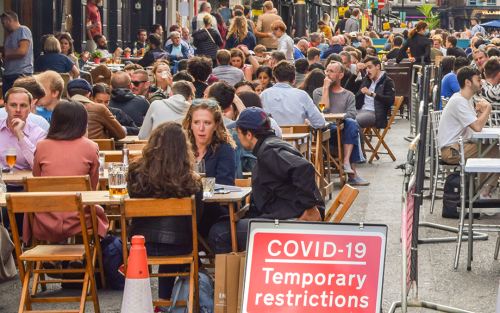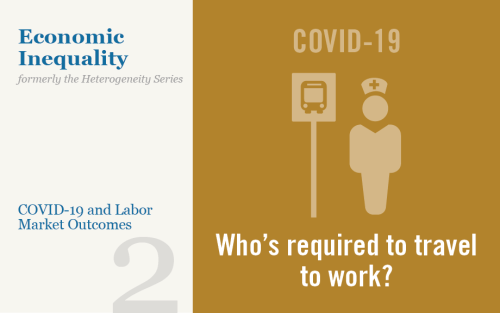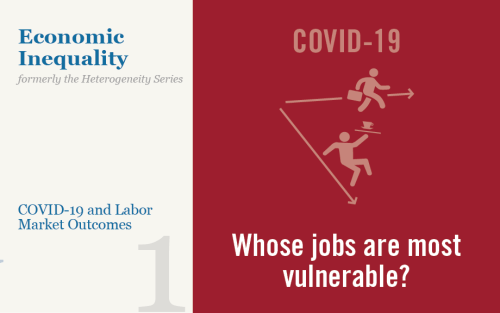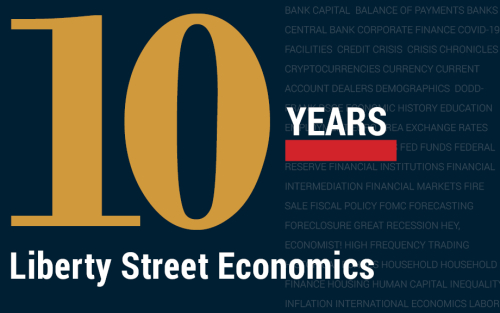“Excess Savings” Are Not Excessive

How will the U.S. economy emerge from the ongoing COVID-19 pandemic? Will it struggle to return to prior levels of employment and activity, or will it come roaring back as soon as vaccinations are widespread and Americans feel comfortable travelling and eating out? Part of the answer to these questions hinges on what will happen to the large amount of “excess savings” that U.S. households have accumulated since last March. According to most estimates, these savings are around $1.6 trillion and counting. Some economists have expressed the concern that, if a considerable fraction of these accumulated funds is spent as soon as the economy re-opens, the ensuing rush of demand might be destabilizing. This post argues that these savings are not that excessive, when considered against the backdrop of the unprecedented government interventions adopted over the past year in support of households and that they are unlikely to generate a surge in demand post-pandemic.
Reasonable Seasonals? Seasonal Echoes in Economic Data after COVID‑19

Seasonal adjustment is a key statistical procedure underlying the creation of many economic series. Large economic shocks, such as the 2007-09 downturn, can generate lasting seasonal echoes in subsequent data. In this Liberty Street Economics post, we discuss the prospects for these echo effects after last year’s sharp economic contraction by focusing on the payroll employment series published by the U.S. Bureau of Labor Statistics (BLS). We note that seasonal echoes may lead the official numbers to overstate actual changes in payroll employment modestly between March and July of this year after which distortions flip the other way.
Did Dealers Fail to Make Markets during the Pandemic?
Sarkar and coauthors liquidity provision by dealers in several important financial markets during the COVID-19 pandemic: how much was provided, possible causes of any shortfalls, and the effects of the Federal Reserve’s actions to support the economy.
Looking Back at 10 Years of Liberty Street Economics
Will Capital Flows through Global Banks Support Economic Recovery?
Liberty Street Economics authors ask whether, based on precedent, global banks are likely to provide additional support to the economic recovery following COVID-19 in the locations they serve.
Mortgage Rates Decline and (Prime) Households Take Advantage

Today, the New York Fed’s Center for Microeconomic Data reported that household debt balances increased by $206 billion in the fourth quarter of 2020, marking a $414 billion increase since the end of 2019. But the COVID pandemic and ensuing recession have marked an end to the dynamics in household borrowing that have characterized the expansion since the Great Recession, which included robust growth in auto and student loans, while mortgage and credit card balances grew more slowly. As the pandemic took hold, these dynamics were altered. One shift in 2020 was a larger bump up in mortgage balances. Mortgage balances grew by $182 billion, the biggest uptick since 2006, boosted by historically high volumes of originations. Here, we take a close look at the composition of mortgage originations, which neared $1.2 trillion in the fourth quarter of 2020, the highest single-quarter volume seen since our series begins in 2000. The Quarterly Report on Household Debt and Credit and this analysis are based on the New York Fed’s Consumer Credit Panel, which is itself based on anonymized Equifax credit data.
Did Subsidies to Too‑Big‑To‑Fail Banks Increase during the COVID‑19 Pandemic?

New Liberty Street Economics analysis by Asani Sarkar investigates whether the COVID-19 pandemic has led to an increase in implicit TBTF subsidies for large firms.
Black and White Differences in the Labor Market Recovery from COVID‑19

The ongoing COVID-19 pandemic and the various measures put in place to contain it caused a rapid deterioration in labor market conditions for many workers and plunged the nation into recession. The unemployment rate increased dramatically during the COVID recession, rising from 3.5 percent in February to 14.8 percent in April, accompanied by an almost three percentage point decline in labor force participation. While the subsequent labor market recovery in the aggregate has exceeded even some of the most optimistic scenarios put forth soon after this dramatic rise, this recovery has been markedly weaker for the Black population. In this post, we document several striking differences in labor market outcomes by race and use Current Population Survey (CPS) data to better understand them.
Understanding the Racial and Income Gap in Commuting for Work Following COVID‑19

The introduction of numerous social distancing policies across the United States, combined with voluntary pullbacks in activity as responses to the COVID-19 outbreak, resulted in differences emerging in the types of work that were done from home and those that were not. Workers at businesses more likely to require in-person work—for example, some, but not all, workers in healthcare, retail, agriculture and construction—continued to come in on a regular basis. In contrast, workers in many other businesses, such as IT and finance, were generally better able to switch to working from home rather than commuting daily to work. In this post, we aim to understand whether following the onset of the pandemic there was a wedge in the incidence of commuting for work across income and race. And how did this difference, if any, change as the economy slowly recovered? We take advantage of a unique data source, SafeGraph cell phone data, to identify workers who continued to commute to work in low income versus higher income and majority-minority (MM) versus other counties.
Some Workers Have Been Hit Much Harder than Others by the Pandemic

Abel and Deitz look at the outsized impact of the COVID-19 pandemic on some workers, particularly those who are in lower-wage jobs, without a college degree, female, minority, and younger.











 RSS Feed
RSS Feed Follow Liberty Street Economics
Follow Liberty Street Economics